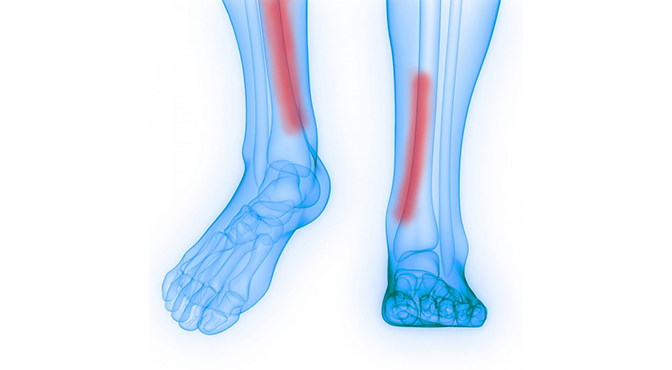SHIN SPLINTS
Overview
The term “shin splints” refers to pain along the inner edge of the shinbone (tibia). It typically develops after increased physical activity. They are often associated with running and sports that include running, jumping and fast changes of direction. Keep in mind any vigorous sports activity can bring on shin splints, especially if you are just starting a fitness program. Taking care not to overdo your exercise routine will help prevent shin splints from coming back.







